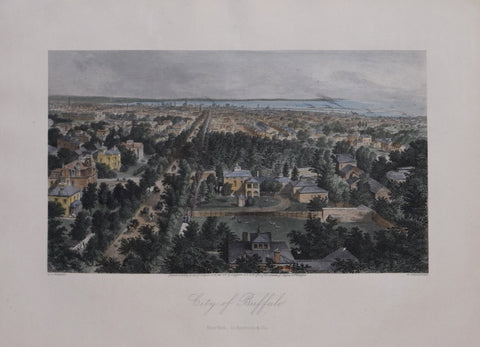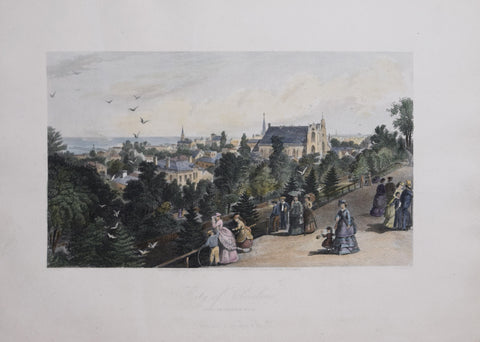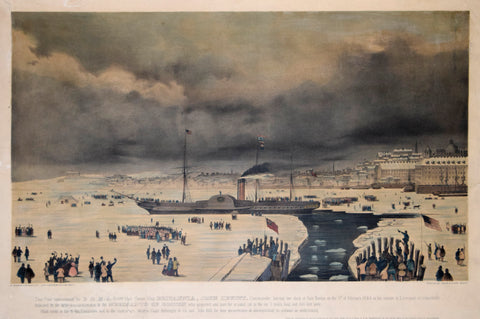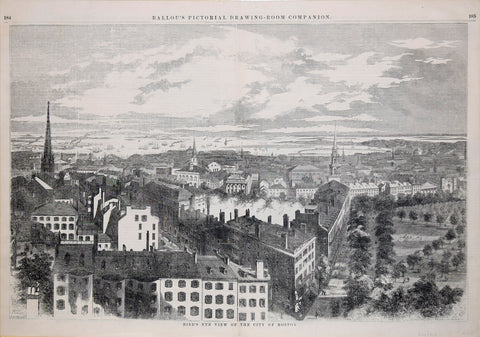
William Jackson (1843-1942), Grand Canyon of the Colorado
William Jackson (1843-1942)
Grand Canyon of the Colorado
Gelatin silver print
Ca. 1899-1902
Sheet size: 20 x 57 1/2”
Framed size: 27 1/2 x 64 3/4”
In 1866 traveling by Union Pacific Jackson reached its end, a point some hundred miles west of Omaha, where he joined as a bullwhacker a wagon train heading west to Great Salt Lake, on the Oregon Trail. In 1867 he settled down in Omaha, NE and got into the photography business with his brother Ed. In 1869 Jackson won a commission from the Union Pacific Railroad to document the scenery along their route for promotional purposes. The following year, he got a last-minute invitation to join the 1871 U.S. government survey (predecessor of USGS) of the Yellowstone River and Rocky Mountains led by Ferdinand Hayden. Painter Thomas Moran was also part of the expedition, and the two artists worked closely together to document the Yellowstone region. Hayden's surveys (accompanied usually by a small detachment of the U.S. Cavalry) were annual multidisciplinary expeditions meant to chart the largely-unexplored west, observe flora (plants), fauna (animals), and geological conditions (geology), and identify likely navigational routes, so Jackson was in a position to capture the first photographs of legendary landmarks of the West. Jackson worked in multiple camera and plate sizes, under conditions that were often incredibly difficult. His photography was based on the collodion process invented in 1848 and published in 1851 by Frederick Scott Archer. Jackson traveled with as many as three camera-types-- a stereographic camera (for stereoscope cards), a "whole-plate" or 8x10" plate-size camera, and one even larger, as large as 18x22". These cameras required fragile, heavy glass plates (photographic plates), which had to be coated, exposed, and developed onsite, before the wet-collodion emulsion dried. Without light metering equipment or sure emulsion speeds, exposure times required inspired guesswork, between five seconds and twenty minutes depending on light conditions.
Preparing, exposing, developing, fixing, washing then drying a single image could take the better part of an hour. Washing the plates in 160 °F hot spring water cut the drying time by more than half, while using water from snow melted and warmed in his hands slowed down the processing substantially. His photographic division of 5-7 men carried photographic equipment on the backs of mules and rifles on their shoulders- Siouxess still made scalping - Jackson's life experience (as military, as peaceful dealing with Indians) was welcomed. The weight of the glass plates and the portable darkroom limited the number of possible exposures on any one trip, and these images were taken in primitive, roadless, and physically challenging conditions. Once when the mule lost its footing, Jackson lost a month's work, having to return to untracked Rocky Mountain landscapes to remake the pictures, one of which was his celebrated view of the Mount of the Holy Cross. Despite these difficulties Jackson came back with photographic evidence of western landmarks that had previously seemed fantastic rumor: the Grand Tetons, Old Faithful and the rest of Yellowstone, Colorado's Rockies and the Mount of the Holy Cross, and the uncooperative Ute Indians. Jackson's photographs of Yellowstone helped convince the U.S. Congress to make it the first National Park in March 1872. Jackson exhibited photographs and clay models of Anasazi dwellings at Mesa Verde in Colorado in the 1876 Centennial Exposition in Philadelphia. He continued traveling on the Hayden Surveys until the last one in 1878. He later established a studio in Denver, Colorado and produced a huge inventory of national and international views. Commissioned to photograph for western state exhibitions at the World's Columbian Exposition of 1893, he eventually produced a final portfolio of views of the just-shuttered "White City" for Director of Works and architect Daniel Burnham.
Thrust into financial exigencies by the Panic and Depression of 1893-95, Jackson accepted a commission by Marshall Field to travel the world photographing and gathering specimens for a vast new museum in Chicago; his pictures and reports were published by Harper's Weekly magazine. He returned to Denver and shifted into publishing; in 1897 he sold his entire stock of negatives and his own services to the formerly called the Detroit Photographic Company (owned by William A. Livingstone), after the company had acquired the exclusive ownership and rights to the photochrom process in America. Jackson joined the company in 1898 as president - just when the Spanish American War gained the nation's fervent interest - bringing with him an estimated 10,000 negatives which provided the core of the company's photographic archives, from which they produced pictures ranging from postcards to mammoth-plate panoramas. In 1903, Jackson became the plant manager, thus leaving him with less time to travel and take photographs. In 1905 or 1906, the company changed its name from the Detroit Photographic Co. to the Detroit Publishing Co. In 1936 Edsel Ford backed by his father Henry Ford bought Jackson's 40,000 negatives from Livingstone's estate for "The Edison Institute" known today as Greenfield Village in Dearborn, Michigan. Eventually, Jackson's negatives were divided between the Colorado Historical Society (views west of the Mississippi), and the Library of Congress Prints and Photographs Division (all other views).
We Also Recommend





